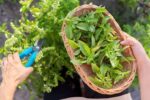Join on WhatsApp
Get the latest updates directly on WhatsApp – motivation, news & more!
Not every garden enjoys the luxury of full sun, but that doesn’t mean your green space has to be dull or lifeless. Whether your backyard is shaded by tall trees or your balcony faces away from the sun, there are plenty of beautiful plants that not only tolerate shade but actually thrive in it. With the right selection, even low-light corners can become lush, vibrant, and full of life. Here’s a look at six outstanding shade-loving plants that perform exceptionally well without the need for full sun.
Hostas: The Kings of Foliage
Hostas are among the most popular shade plants for a reason. Known for their rich foliage and impressive range of sizes and colors, hostas bring texture and interest to any shady spot. These perennials are particularly valuable for their leaves, which can be variegated, glossy, blue-toned, or chartreuse depending on the variety.
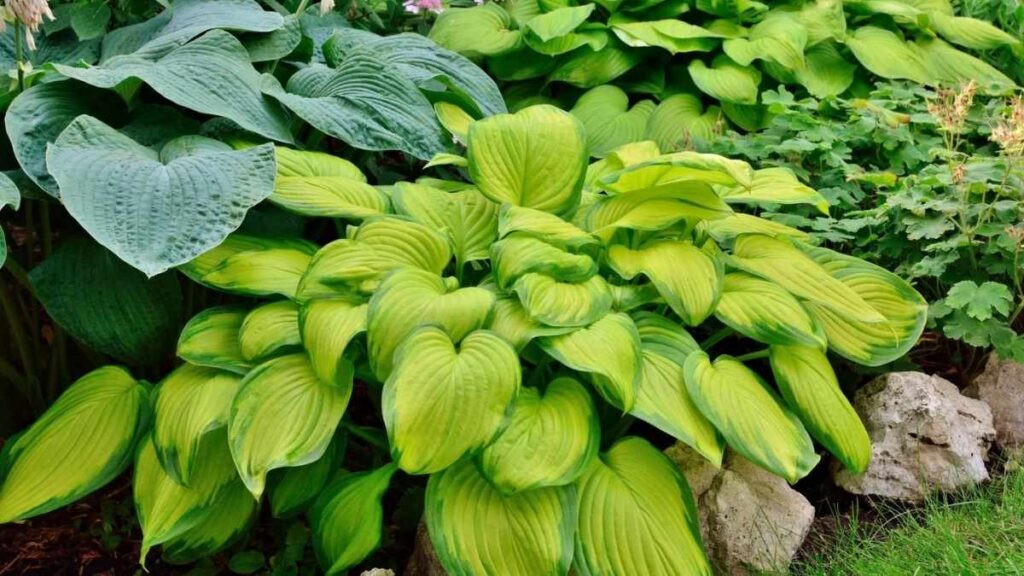
While hostas do bloom with spikes of lavender or white flowers in summer, it’s their foliage that makes them stand out. They’re incredibly low-maintenance and thrive best in moist, well-drained soil. Slugs may occasionally pose a problem, but otherwise, hostas are hardy and reliable, returning year after year to fill out shadowy garden beds.
Ferns: Graceful Green for Every Corner
Ferns are the quintessential shade-dwellers, often found in forest understories in nature. Their delicate, arching fronds add elegance to garden beds and containers alike. From the feathery maidenhair fern to the robust Japanese painted fern, there’s a fern for every aesthetic.
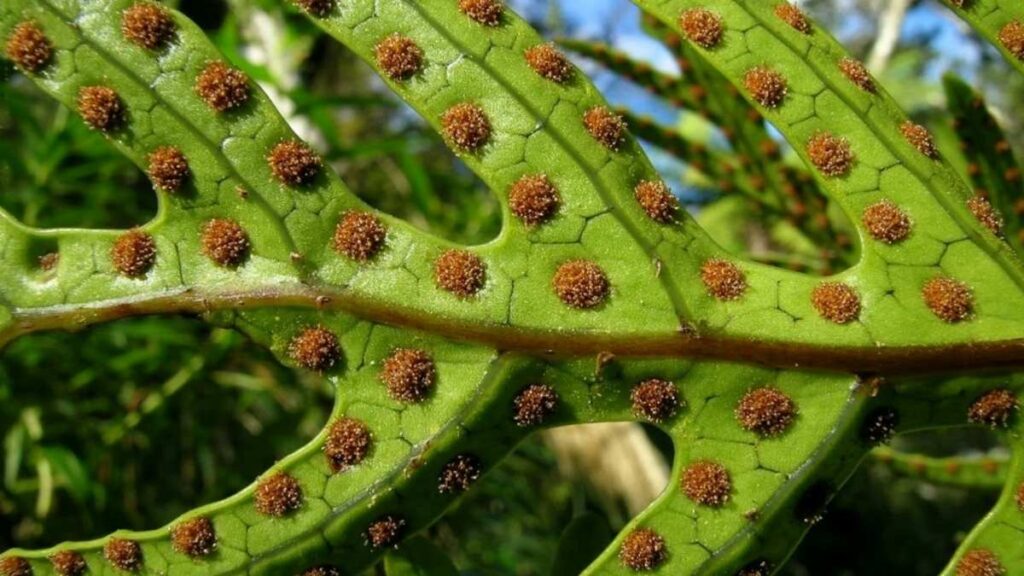
What makes ferns special is their ability to soften harsh edges and bring a wild, woodland feel to your landscape. They prefer consistently moist soil and protection from harsh winds or sunburn. Given their preference for high humidity, ferns are also great candidates for shaded bathrooms or shaded indoor corners where other plants might struggle.
Astilbes: Feathery Blooms in the Shade
Astilbes are one of the few shade-loving plants that produce vibrant, colorful flowers. Their feathery plumes of red, pink, white, or lavender rise above fern-like foliage, making them an excellent choice for shaded borders or garden beds that need a pop of color.
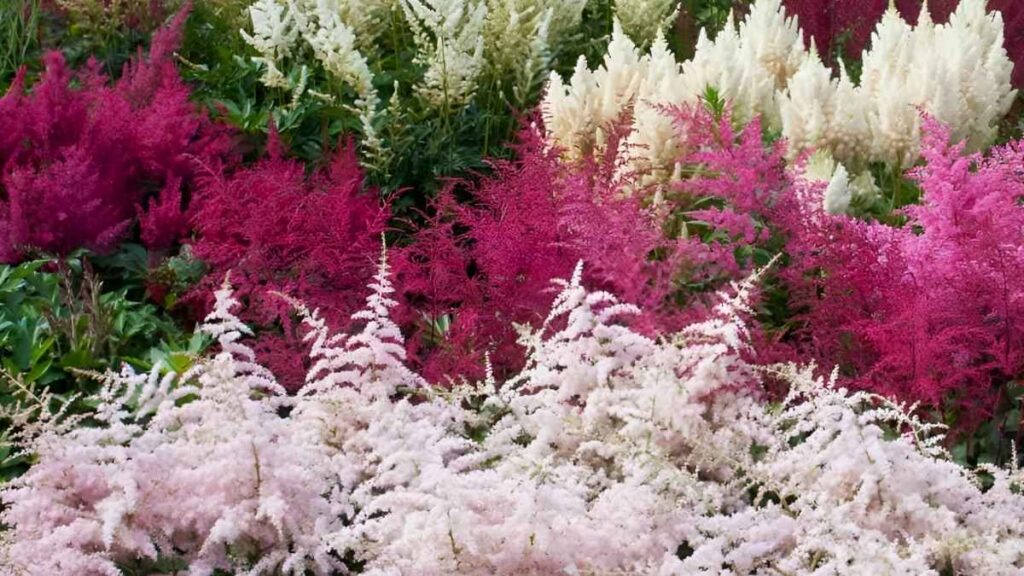
These hardy perennials prefer moist soil and do particularly well in part shade, although they can tolerate deeper shade if moisture levels are high. Astilbes are also deer-resistant and attract pollinators, adding both beauty and biodiversity to your garden.
Heucheras: Colorful Coral Bells for Contrast
Heucheras, commonly known as coral bells, offer some of the most eye-catching foliage in the shade garden. Their leaves come in a stunning array of colors, including burgundy, lime green, caramel, and even silvery tones. Some varieties also produce small, bell-shaped flowers on tall stems during late spring or summer.
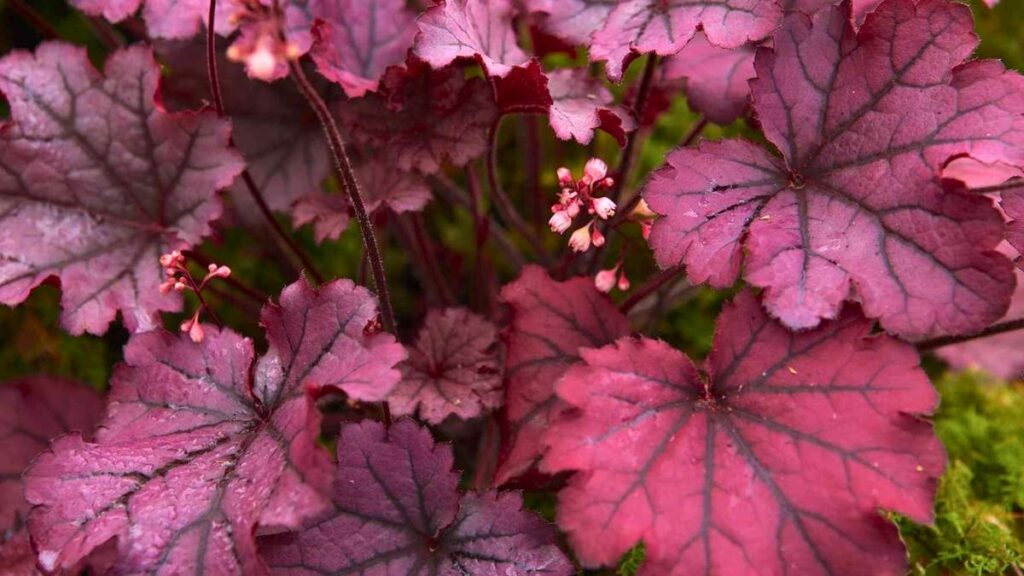
Ideal for edging or filling in around taller plants, heucheras are compact, hardy, and drought-tolerant once established. They prefer partial to full shade and well-draining soil, and their vibrant leaves provide year-round interest, making them valuable in both garden beds and containers.
Bleeding Heart: Timeless Romance in the Shade
Bleeding hearts are one of the most romantic and recognizable plants in any shaded garden. Their arching stems bear rows of delicate, heart-shaped flowers in shades of pink or white, often blooming in late spring to early summer.
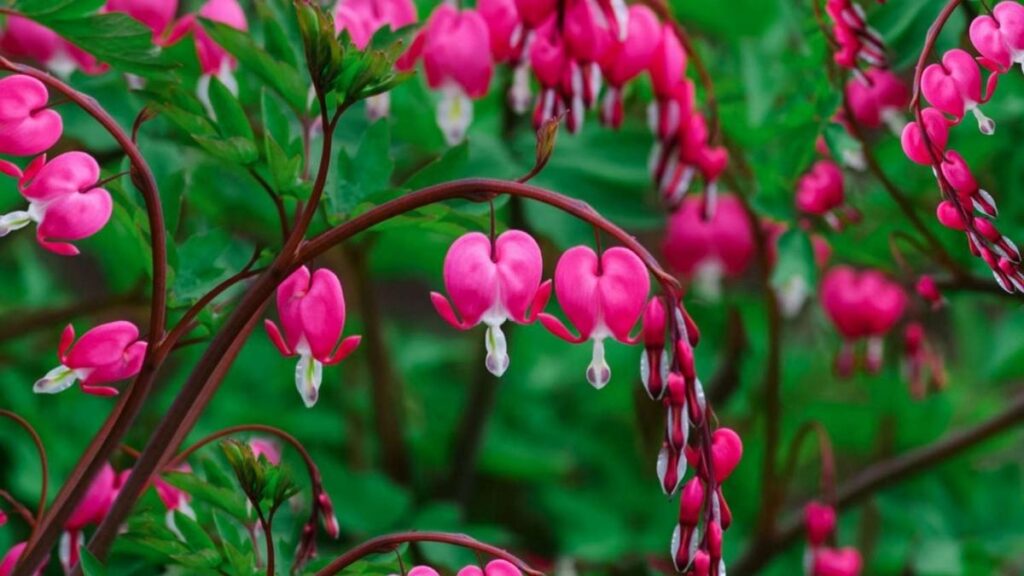
This perennial prefers cooler, moist, and shaded conditions and thrives best in woodland or cottage-style gardens. While bleeding hearts go dormant after blooming, their early-season beauty makes them perfect companions for hostas or ferns that fill in later. The key to keeping bleeding hearts happy is consistent moisture and protection from direct sun, which can scorch their tender foliage.
Caladiums: Tropical Flair for Dim Corners
For those looking to add tropical drama to shaded spots, caladiums are an excellent choice. Known for their vibrant, heart-shaped leaves in patterns of red, pink, green, and white, caladiums shine in the absence of strong sunlight.
These tuberous plants love warmth and humidity, making them ideal for shady patios, porches, and indoor containers. Caladiums require little maintenance other than regular watering and occasional feeding during their growing season. They’re annuals in colder climates but can be overwintered indoors or replanted each year for a reliable burst of color.
Conclusion
Shade doesn’t have to be a limitation it can be an opportunity to explore a different palette of plants that bring texture, color, and calm to your outdoor or indoor space. With choices like hostas, ferns, astilbes, heucheras, bleeding hearts, and caladiums, you can transform even the dimmest corner into a lush retreat.
The key to success with shade-loving plants is understanding their moisture and soil needs and placing them in conditions where they won’t be stressed by excessive sun or dryness. With the right care and combinations, your shaded areas can become some of the most beautiful parts of your garden.
If you’d like more suggestions tailored to your local climate or indoor conditions, feel free to ask. I can also help plan a shade garden layout or provide care calendars for your selected plants.


